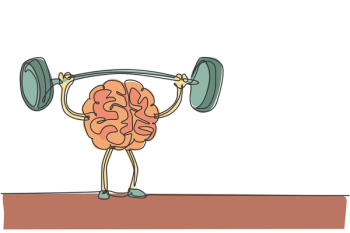
Can an “Electric” Cup Change the Way Consumers Taste a Drink?
Can ion-polarization technology help drink manufacturers cut their use of ingredients like added sugar?
Food and drink makers devote thousands of hours and millions of dollars ensuring their products taste just right. But what if, with a simple electrical charge, you could change the taste of, say, a juice drink, making it slightly sweeter or “sparkling”? That’s the thinking behind a new prototype from a company called Global Ionics LLC (Pleasantville, NY). The company has created a drinking-cup concept called Beverage Power.
The company describes Beverage Power as “a drinking vessel that is powered by the human body, along with a patented voltage booster circuit and one AAA battery, to generate a small, safe electric current within any beverage. The results and benefits are astounding, since tastes are altered and enhanced. For example, salty drinks taste saltier, sugary drinks taste sweeter, beers taste fizzier, and champagnes taste bubblier.”
How does it work? The Beverage Power device can affix to virtually any drinking vessel-a cup, a glass, or even a water bottle. When users touch their lips to the container, their body in essence completes the electric circuit and powers a flow of negative ions-9 volts of power-that releases in the body. Already, the body inherently relies on positive and negative ions (protons and neutrons) to help power normal cellular and bodily functions. But by pumping up the charge, so to speak, consumers can see additional benefits.
For instance, Global Ionics already sells a toothbrush, Ionic ProClean, driven by the same concept. According to the company, because dental plaque has a negative charge and calcium (present in plaque and saliva) has a positive charge, the two attract and lead to plaque adherence to teeth. Ionic ProClean deters plaque adherence by releasing a supply of negative ions that helps prevent the plaque-calcium attraction. The company also has prototypes for sinus-relief and hairbrush products, also revolving around electric current.
Global Ionics says there could be numerous health benefits to a product like Beverage Power. Consumers or manufacturers could, for instance, reduce the amount of salt or sugar in food and drink, instead relying on electrical charge to boost the perception of salty or sugary taste. For sports nutritionists, Beverage Power could also help boost electrolyte absorption in the body and help speed recovery.
“As opposed to the ions that you get in the air or by a blow dryer that’s just sort of forcing ions out through a generator, it’s a totally different ion,” says Ken Davidov, managing partner, Global Ionics. He says the charge users get when completing the electric circuit with Beverage Power-when they touch their lips to the container-“is more related to the body, so the reason that you’re getting a benefit is because you’re connected to it.”
Global Ionics isn’t the only entity exploring the possibilities of electrically charged food.
Global Ionics is now looking to secure partners to develop Beverage Power for market, says Davidov. The company already owns the patent to its specific, proprietary voltage-boosting circuitry technology (US Patent #8330549), and Davidov says the company has patents pending on Beverage Power, which could be used for sodas, sports drinks, beer, and wine. “Our priority is to work with partners who will research and test the benefits of using electric current in a beverage, medicines, health remedies, and even food products,” he says.
Davidov describes the electric sensation from the device as this: “No tingle. No electric feeling. It is a small, low electric current and very safe for the body. The only thing you feel is a different taste-saltier, sweeter, fizzier, etc.”
Will ion-polarization technology become the next big thing in gustation? Davidov believes so. “This is really where the future is going,” he says, also noting the general trend for wearable electronics. “I think it’s the next big wave. I think people are going to have a lot more sense of their own body and their own health. It’s coming.”
Editor-in-Chief
Nutritional Outlook magazine
jennifer.grebow@ubm.com
Newsletter
From ingredient science to consumer trends, get the intel you need to stay competitive in the nutrition space—subscribe now to Nutritional Outlook.





